|
Books Should Be Free Loyal Books Free Public Domain Audiobooks & eBook Downloads |
|
|
Books Should Be Free Loyal Books Free Public Domain Audiobooks & eBook Downloads |
|
Fiction |
|---|
|
Book type:
Sort by:
View by:
|
By: Eliza Orzeszkowa (1842-1910) | |
|---|---|
 The Argonauts
The Argonauts
| |
By: Elizabeth Anderson | |
|---|---|
 The Goblins' Christmas
The Goblins' Christmas
| |
By: Elizabeth Davis Leavitt | |
|---|---|
 The Grasshopper Stories
The Grasshopper Stories
| |
By: Elizabeth Gaskell | |
|---|---|
 The Grey Woman
The Grey Woman
A “Bluebeard” story in which a young woman marries a man whom she discovers has killed his previous wives and is trying to kill her as well. | |
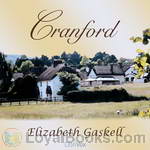 Cranford
Cranford
Cranford is the best-known novel of the 19th century English writer Elizabeth Gaskell. It was first published in 1851 as a serial in the magazine Household Words, which was edited by Charles Dickens. | |
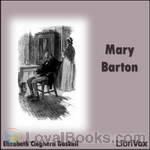 Mary Barton
Mary Barton
Mary Barton is the first novel by English author Elizabeth Gaskell, published in 1848. The story is set in the English city of Manchester during the 1830s and 1840s and deals heavily with the difficulties faced by the Victorian lower class. The novel begins in Manchester, where we are introduced to the Bartons and the Wilsons, two working class families. John Barton reveals himself to be a great questioner of the distribution of wealth and the relation between the rich and the poor. He also relates how his sister-in-law Esther has disappeared after she ran away from home... | |
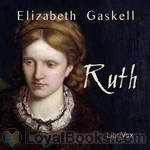 Ruth
Ruth
The book is a social novel, dealing with Victorian views about sin and illegitimacy. It is a surprisingly compassionate portrayal of a ‘fallen woman’, a type of person normally outcast from respectable society. The title of the novel refers to the main character Ruth Hilton, an orphaned young seamstress who is seduced and then abandoned by gentleman Henry Bellingham. Ruth, pregnant and alone, is taken in by a minister and his sister. They conceal her single status under the pretence of widowhood in order to protect her child from the social stigma of illegitimacy... | |
 Sylvia's Lovers
Sylvia's Lovers
The novel begins in the 1790s in the coastal town of Monkshaven. Sylvia Robson lives with her parents on a farm, and is loved by her rather dull Quaker cousin Philip. She, however, meets and falls in love with Charlie Kinraid, a sailor on a whaling vessel, and they become engaged, although few people know of the engagement. But Charlie gets press-ganged and have to leave without a word. | |
 Cousin Phillis
Cousin Phillis
Cousin Phillis (1864) is a novel by Elizabeth Gaskell about Paul Manning, a youth of seventeen who moves to the country and befriends his mother's family and his second cousin Phillis Holman, who is confused by her own placement at the edge of adolescence. Most critics agree that Cousin Phillis is Gaskell's crowning achievement in the short novel. The story is uncomplicated; its virtues are in the manner of its development and telling. | |
 The Grey Woman and other Tales
The Grey Woman and other Tales
| |
 My Lady Ludlow
My Lady Ludlow
This novella by the acclaimed Elizabeth Gaskell follows the reminiscences and life of aristocratic Lady Ludlow, told through the eyes of one of her charges, the young Margaret Dawson. Lady Ludlow epitomizes the unwillingness of the old English gentry to accept the progression of social reform and technology, such as education for the poor and religious leniency. She reminisces about her friends in the French revolution and tries to protect and guide the numerous young ladies she has taken under her care. | |
 Dark Night's Work
Dark Night's Work
Love, murder and class commentary in Mrs Gaskell's usual brilliant style! This novel was originally serialised and published by Charles Dickens, with whom Mrs Gaskell had several disagreements. She chose to avoid melodrama and concentrate on psychological realism to produce a moving story of people meeting and parting across class divides. | |
 Doom of the Griffiths
Doom of the Griffiths
| |
 Lizzie Leigh
Lizzie Leigh
| |
 Round the Sofa
Round the Sofa
| |
 Half a Life-Time Ago
Half a Life-Time Ago
| |
 An Accursed Race
An Accursed Race
| |
 The Poor Clare
The Poor Clare
| |
 The Half-Brothers
The Half-Brothers
| |
By: Elizabeth Inchbald (1753-1821) | |
|---|---|
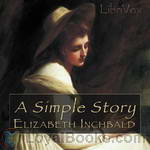 A Simple Story
A Simple Story
The story could really have been simple: Miss Milner, who is admired for her beauty and charm, could have been a socialite, marry a respectable and good looking man and be happy in the standards of her time. But if it was so, why would there be a book? Miss Milner, beautiful and charming as she is, announces her wish to marry her guardian, a catholic priest. But women in the 18th century do not declare their wishes or speak about their passions, and- after all- he is a catholic priest… And if he finds a way to marry her, is this her road to happiness? | |
By: Elizabeth M. Duffield | |
|---|---|
 Lucile Triumphant
Lucile Triumphant
| |
By: Elizabeth Miller (1878-1961) | |
|---|---|
 The Yoke A Romance of the Days when the Lord Redeemed the Children of Israel from the Bondage of Egypt
The Yoke A Romance of the Days when the Lord Redeemed the Children of Israel from the Bondage of Egypt
| |
By: Elizabeth Robins (1862-1952) | |
|---|---|
 The Convert
The Convert
| |
By: Elizabeth Stoddard (1823-1902) | |
|---|---|
 The Morgesons
The Morgesons
Stoddard’s novel traces the education and development of a young female in American middle-class society. The protagonist, Cassandra Morgeson, is educated by a series of journeys she makes throughout her youth and early adulthood. Each new setting represents a different stage in her intellectual development.Cassandra is born in Surrey, a small New England town. Surrey is quiet and isolated, granting a young woman little intellectual stimulation. Cassandra escapes the boredom of domestic life through stories of adventure and exploration. Surrey instills in Cassandra a restlessness that drives her quest for knowledge and experience.(Introduction by Wikipedia) | |
 Lemorne Versus Huell
Lemorne Versus Huell
| |
By: Elizabeth Stuart Phelps (1844-1911) | |
|---|---|
 A Lost Hero
A Lost Hero
| |
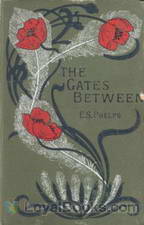 The Gates Between
The Gates Between
| |
 Gypsy Breynton
Gypsy Breynton
| |
 Gypsy's Cousin Joy
Gypsy's Cousin Joy
| |
 Men, Women, and Ghosts
Men, Women, and Ghosts
| |
By: Elizabeth von Arnim (1866-1941) | |
|---|---|
 The Enchanted April
The Enchanted April
It’s a dreary February in post-World War I London when Mrs. Wilkins spots an advertisement in The Times for a small Italian castle for rent in April. She sees another member of her women’s club, Mrs. Arbuthnot, reading the same advertisement and manages to convince her that the two of them should rent it. Both are miserable and lonely in their marriages. They can’t afford the cost of the villa, San Salvatore, on their own and must advertise for two others, eventually recruiting an elderly widow named Mrs... | |
 The Princess Priscilla's Fortnight
The Princess Priscilla's Fortnight
The Princess Priscilla of Lothen Kunitz finds court life stifling and runs away to England with the elderly court librarian. Her intention is to live a pure and simple life filled with good works. But life among ordinary people in an English village is not what she expects it to be... (Introduction by Tabithat) | |
By: Elizabeth Von Arnim (1866-1941) | |
|---|---|
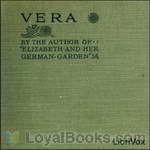 Vera
Vera
Vera (1921) by Elizabeth von Arnim is a black comedy based on her disastrous second marriage to Earl Russell: a mordant analysis of the romantic delusions through which wives acquiesce in husbands' tyrannies. In outline the story of this utterly unromantic novel anticipates DuMaurier's Rebecca. Naive Lucy Entwhistle is swept into marriage by widower, Everard Wemyss. His mansion "The Willows" is pervaded by the spectre of his dead wife Vera, with whom Lucy becomes obsessed. ... Here the servants are partisan for both wives, and lose no opportunity to disrupt Everard's unctuous, oppressive household routines... | |
By: Elizabeth von Arnim (1866-1941) | |
|---|---|
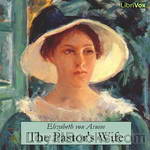 The Pastor's Wife
The Pastor's Wife
Written by an author born in Australia, grew up in England, married in Germany, and then flew to the United States. A tale about a young woman, freed up from the bonds of her family life, to wonder all around in search of all things feminist. The story seems somewhat autobiographical, surrounded in disillusionment and humor. Written on the eve of World War I and just back from married life in Germany. | |
 Elizabeth and her German Garden
Elizabeth and her German Garden
Elizabeth and Her German Garden is a novel by Elizabeth von Arnim, first published in 1898; it was very popular and frequently reprinted during the early years of the 20th century. The story is a year's diary written by the protagonist Elizabeth about her experiences learning gardening and interacting with her friends. It includes commentary on the beauty of nature and on society, but is primarily humorous due to Elizabeth's frequent mistakes and her idiosyncratic outlook on life. She looked down upon the frivolous fashions of her time writing "I believe all needlework and dressmaking is of the devil, designed to keep women from study... | |
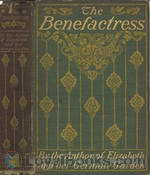 Benefactress
Benefactress
Anna Estcourt, twenty-five and beautiful, is the penniless ward of her distant brother and his exasperating wife. Turning down all offers of marriage, scornful at the thought of leaning on a man for help and comfort, she thinks only of the independence which seems an impossible dream. But out of the blue Uncle Joachim, her mother's brother, leaves her a handsome property in Germany. Her longed for independence is within her grasp, and though it's a rocky beginning with the locals, she loves her new home... | |
By: Elizabeth Weston Timlow (1861-1931) | |
|---|---|
 Cricket at the Seashore
Cricket at the Seashore
| |
By: Elizabeth Wilson Grierson | |
|---|---|
 Tales From Scottish Ballads
Tales From Scottish Ballads
| |
By: Ella Farman Pratt (1837-1907) | |
|---|---|
 Lill's Travels in Santa Claus Land And Other Stories
Lill's Travels in Santa Claus Land And Other Stories
| |
By: Ella Fraser Weller | |
|---|---|
 Nestlings A Collection of Poems
Nestlings A Collection of Poems
| |
By: Ella Rodman Church (1831-) | |
|---|---|
 Among the Trees at Elmridge
Among the Trees at Elmridge
"On that bright spring afternoon when three happy, interested children went off to the woods with their governess to take their first lesson in the study of wild flowers, they saw also some other things which made a fresh series of "Elmridge Talks," and these things were found among the trees of the roadside and forest." | |
By: Ella Scrymsour (1888-1962) | |
|---|---|
 Perfect World
Perfect World
Almost certainly the merging of two separate magazine novellas, where Scrymsour attempted to weave together the plots. In this fantasy/ science fiction novel, the two young gentlemen protagonists are transported from a company town dominated by their family coalmine into an underground cave system where an oligarchic exiled race of dwarf Israelites has lived for 3000 years and grown horns. More space and time travel follow bringing our heroes to Jupiter, where romance follows. - Summary by Lynne Thompson | |
By: Ella Wheeler Wilcox (1850-1919) | |
|---|---|
 Poems of Power
Poems of Power
This is a volume in a series of books of poetry by Ella Wheeler Wilcox. This time, the theme is "Power". | |
By: Ellen Anderson Gholson Glasgow (1873-1945) | |
|---|---|
 The Deliverance; a romance of the Virginia tobacco fields
The Deliverance; a romance of the Virginia tobacco fields
| |
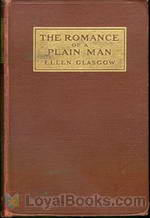 The Romance of a Plain Man
The Romance of a Plain Man
| |
 The Miller Of Old Church
The Miller Of Old Church
| |
 The Voice of the People
The Voice of the People
| |
By: Ellen C. Babbitt (1872-) | |
|---|---|
 More Jataka Tales
More Jataka Tales
The continued success of the "Jataka Tales," as retold and published ten years ago, has led to this second and companion volume. Who that has read or told stories to children has not been lured on by the subtle flattery of their cry for "more"? The Jataka tales, regarded as historic in the Third Century B. C., are the oldest collection of folk-lore extant. They come down to us from that dim far-off time when our forebears told tales around the same hearth fire on the roof of the world. | |
By: Ellen Newbold La Motte (1873-1961) | |
|---|---|
 Civilization Tales of the Orient
Civilization Tales of the Orient
| |
By: Ellen Thorneycroft Fowler (1860-1929) | |
|---|---|
 The Farringdons
The Farringdons
| |
By: Elliott O’Donnell (1872—1965) | |
|---|---|
 Animal Ghosts
Animal Ghosts
Summary: This is a collection of ghost stories in which the antagonists are various animals. Divided up into chapters of ghost sightings by each group of animals, you will hear of hauntings by dogs, cats, birds, jungle animals, etc. (Summary by Allyson Hester) | |
By: Elliott Whitney | |
|---|---|
 The Rogue Elephant The Boys' Big Game Series
The Rogue Elephant The Boys' Big Game Series
| |
 The Pirate Shark
The Pirate Shark
| |
By: Ellis Meredith (1865-1955) | |
|---|---|
 The Master-Knot of Human Fate
The Master-Knot of Human Fate
A tale of two people, and their search for answers to unknown questions. Adam and Robin find themselves inexplicably alone after an apparent natural cataclysm, and are compelled to learn how to survive, how to endure, but most importantly to themselves, how to enjoy, understand their new roles in life, and understand each other. (Introduction by Roger Melin) | |
By: Ellis Parker Butler (1869-1937) | |
|---|---|
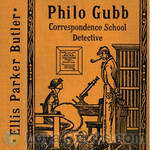 Philo Gubb, Correspondence-School Detective
Philo Gubb, Correspondence-School Detective
Philo Gubb, not being content with his job as wallpaper-hanger, has higher aspirations: to become a detective, just like Sherlock Holmes. To that end, he enrolls in a correspondence course, where he gets lessons through the mail as well as the necessary disguises for a detective. Philo Gubb, not being really clever or intuitive, or even looking good in those disguises, gets involved in one case after the other - and sooner or later happens to stumble on and solve the crime... Each of these stories... | |
 The Thin Santa Claus The Chicken Yard That Was a Christmas Stocking
The Thin Santa Claus The Chicken Yard That Was a Christmas Stocking
| |
 Solander's Radio Tomb
Solander's Radio Tomb
| |
 The Water goats and other troubles
The Water goats and other troubles
| |
By: Elmer Sherwood (1884-) | |
|---|---|
 Ted Marsh on an Important Mission
Ted Marsh on an Important Mission
| |
By: Elsie Spicer Eells | |
|---|---|
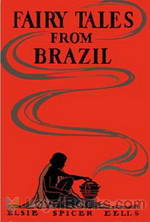 Fairy Tales from Brazil
Fairy Tales from Brazil
This book, subtitled "How and Why Tales from Brazilian Folk-Lore", is a collection of short stories, most of them etiologial myths from Brazilian Indian Folklore. | |
 Tales of Giants from Brazil
Tales of Giants from Brazil
| |
By: Elva S. Smith | |
|---|---|
 Christmas in Legend and Story A Book for Boys and Girls
Christmas in Legend and Story A Book for Boys and Girls
| |
By: Emerson Hough (1857-1923) | |
|---|---|
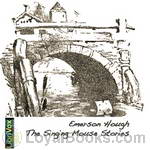 The Singing Mouse Stories
The Singing Mouse Stories
The singing mouse tells tales of nature in songs. This book is for those who want to know how the mountains ate up the plains, what the waters said or where the city went. | |
 The Lady and the Pirate Being the Plain Tale of a Diligent Pirate and a Fair Captive
The Lady and the Pirate Being the Plain Tale of a Diligent Pirate and a Fair Captive
| |
 The Young Alaskans
The Young Alaskans
| |
 The Young Alaskans on the Missouri
The Young Alaskans on the Missouri
| |
 The Man Next Door
The Man Next Door
| |
 The Young Alaskans in the Rockies
The Young Alaskans in the Rockies
| |
 The Young Alaskans on the Trail
The Young Alaskans on the Trail
| |
 Young Alaskans in the Far North
Young Alaskans in the Far North
| |
By: Émile de La Bédollière (1812-1883) | |
|---|---|
 The Story of a Cat
The Story of a Cat
| |
By: Émile Gaboriau (1832-1873) | |
|---|---|
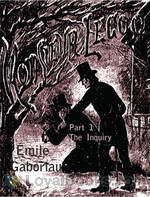 Monsieur Lecoq: The Inquiry
Monsieur Lecoq: The Inquiry
Monsieur Lecoq is a captivating mystery, historical and love story : Around 11 o'clock, on the evening of Shrove Sunday 18.., close to the old Barrière d'Italie, frightful cries, coming from Mother Chupin's drinking-shop, are heard by a party of detectives led by Inspector Gévrol. The squad runs up to it. A triple murder has just been committed. The murderer is caught on the premises. Despite Gévrol's opinion that four scoundrels encountered each other in this vile den, that they began to quarrel, that one of them had a revolver and killed the others, Lecoq, a young police agent, suspects a great mystery... | |
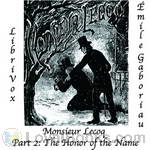 Monsieur Lecoq Part 2: The Honor of the Name
Monsieur Lecoq Part 2: The Honor of the Name
Monsieur Lecoq is a captivating mystery, historical and love story: Around 11 o'clock, on the evening of Shrove Sunday 18.., close to the old Barrière d'Italie, frightful cries, coming from Mother Chupin's drinking-shop, are heard by a party of detectives led by Inspector Gévrol. The squad runs up to it. A triple murder has just been committed. The murderer is caught on the premises. Despite Gévrol's opinion that four scoundrels encountered each other in this vile den, that they began to quarrel, that one of them had a revolver and killed the others, Lecoq, a young police agent, suspects a great mystery... | |
By: Emile Gaboriau (1832-1873) | |
|---|---|
 Other People's Money
Other People's Money
| |
 The Mystery of Orcival
The Mystery of Orcival
| |
 Baron Trigault's Vengeance
Baron Trigault's Vengeance
| |
 Caught in the Net
Caught in the Net
| |
 The Count's Millions
The Count's Millions
| |
 Within an Inch of His Life
Within an Inch of His Life
| |
By: Émile Souvestre (1806-1854) | |
|---|---|
 An Attic Philosopher in Paris
An Attic Philosopher in Paris
| |
By: Émile Zola (1840-1902) | |
|---|---|
 L'Assommoir
L'Assommoir
Émile François Zola (French pronunciation: [emil zɔˈla]) (2 April 1840 – 29 September 1902) was an influential French writer, the most important exemplar of the literary school of naturalism. More than half of Zola’s novels were part of a set of twenty novels about a family under the Second Empire collectively known as Les Rougon-Macquart. L’Assommoir (1877) is the seventh novel in the series. Usually considered one of Zola’s masterpieces, the novel—a harsh and uncompromising study of alcoholism and poverty in the working-class districts of Paris—was a huge commercial success and established Zola’s fame and reputation throughout France and the world. | |
 Therese Raquin
Therese Raquin
An unsatisfied wife kills her weak husband in order to carry on a sordid affair with another man. However, her selfish plans are spoiled when her husband continues to haunt her. This is often said to be Zola's first great novel. | |
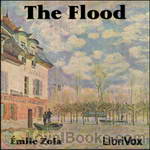 The Flood, trans. by an unknown translator
The Flood, trans. by an unknown translator
A well-to-do French farm family is destroyed by a flood. The story, thrilling to the very end, is told from the point of view of the family’s 70-year-old patriarch. The story speaks of the helplessness of mankind in the face of the forces of nature. | |
 The Fat and the Thin
The Fat and the Thin
| |
 Four Short Stories By Emile Zola
Four Short Stories By Emile Zola
| |
 L'Assommoir
L'Assommoir
| |
 The Fête At Coqueville 1907
The Fête At Coqueville 1907
| |
By: Emilie Flygare-Carlén (1807-1892) | |
|---|---|
 The Home in the Valley
The Home in the Valley
| |
By: Emilie Kip Baker | |
|---|---|
 Short Stories and Selections for Use in the Secondary Schools
Short Stories and Selections for Use in the Secondary Schools
| |
By: Emilie Searchfield | |
|---|---|
 The Heiress of Wyvern Court
The Heiress of Wyvern Court
| |
By: Emily Calvin Blake (1882-) | |
|---|---|
 Suzanna Stirs the Fire
Suzanna Stirs the Fire
| |
By: Emily Paret Atwater | |
|---|---|
 How Sammy Went to Coral-Land
How Sammy Went to Coral-Land
| |
By: Emily Post (1873-1960) | |
|---|---|
 The Title Market
The Title Market
| |